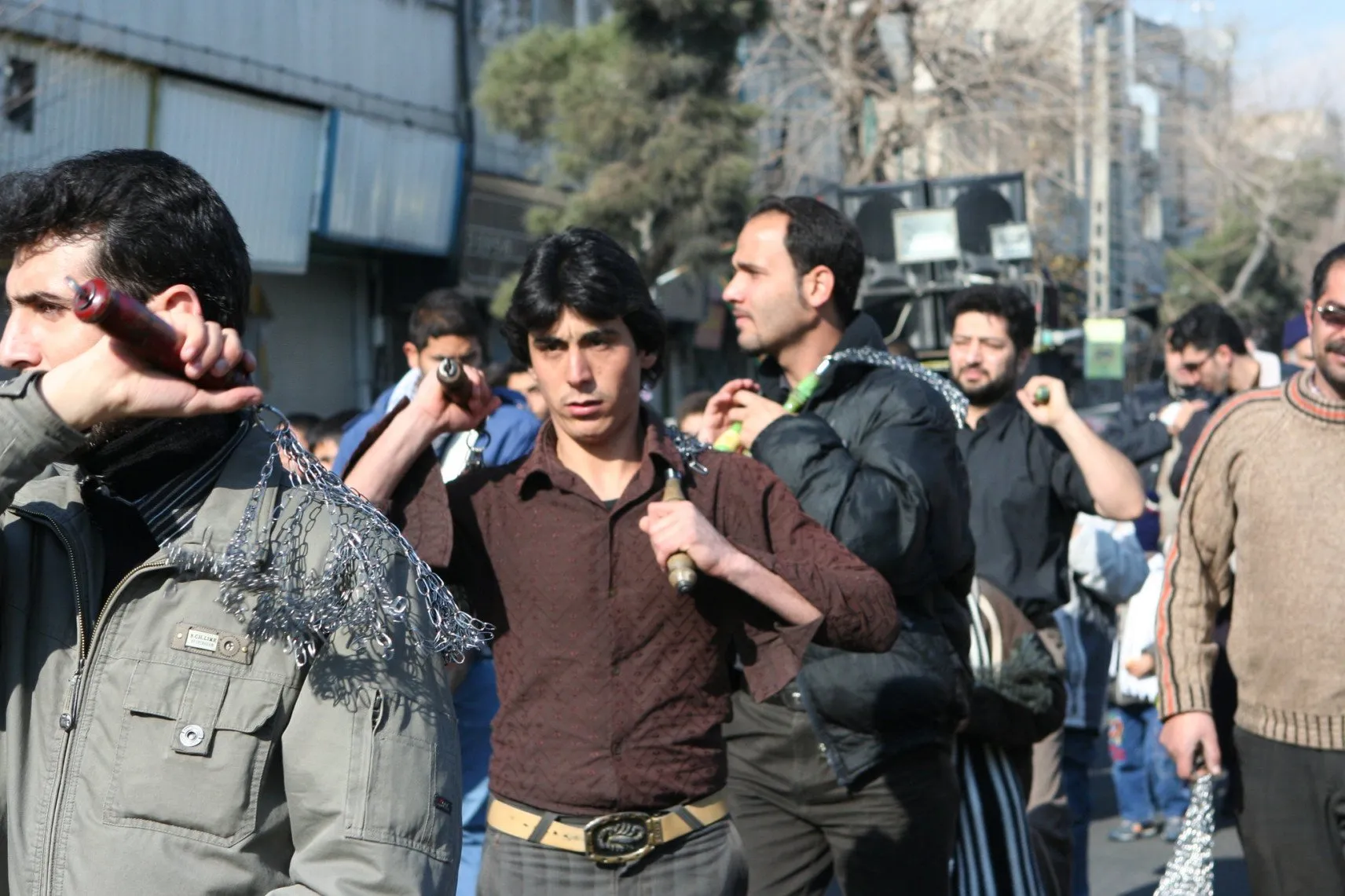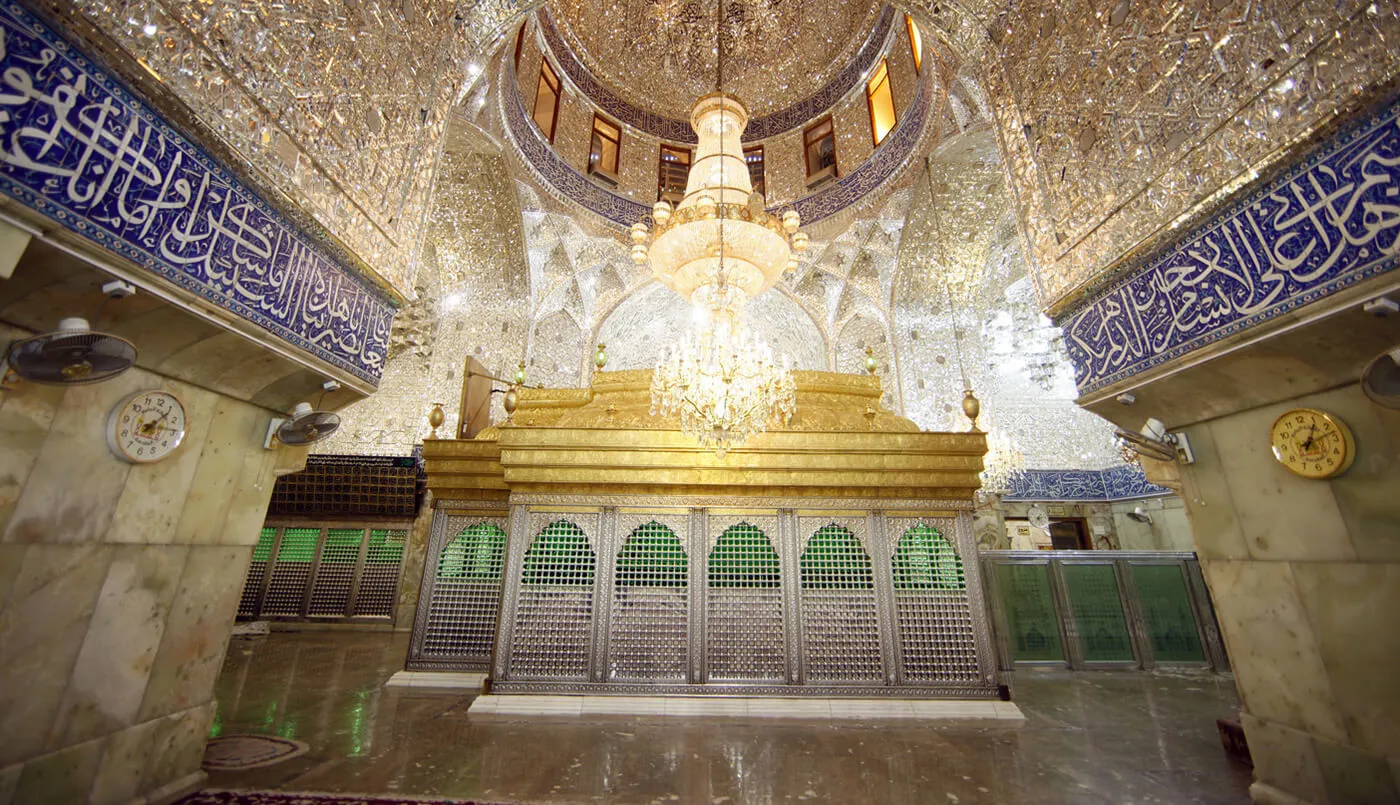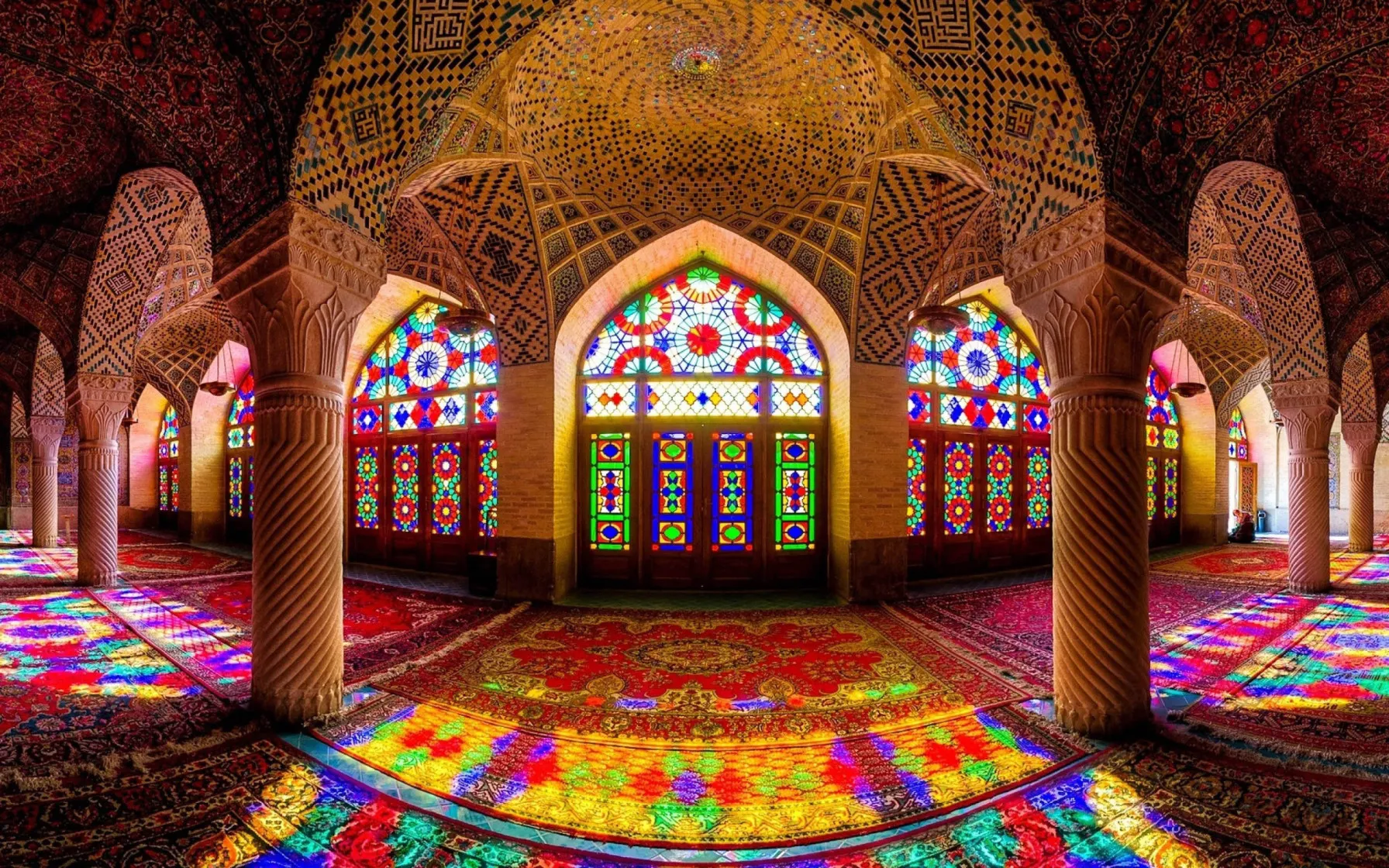During Muharram in Iran, you’ll experience a deeply significant cultural and religious event. It’s a time when Shia Muslims honor the martyrdom of Imam Husayn, Prophet Muhammad’s grandson, with solemnity and reverence. As you walk through Iranian cities, you’ll witness processions known as “Taziyeh” or “Ta’zieh,” where participants reenact the tragic events of Karbala, expressing their grief and devotion through mournful chants and chest-beating rituals.
The pinnacle of Muharram rituals in Iran is Ashura, the tenth day of the month, marked by massive gatherings at mosques and religious centers. Among the most striking rituals is the “Nakhl Gardani,” where devotees carry symbolic structures resembling Imam Husayn’s coffin, accompanied by rhythmic chants and solemn hymns, embodying the enduring legacy of martyrdom in Shia Islam. As a visitor during Muharram, you’re invited to participate in these rituals, offering you a profound insight into Iranian culture and spirituality. Consider joining a Ziyarat tour for a curated experience and a deeper understanding of Muharram’s significance in Iranian society.
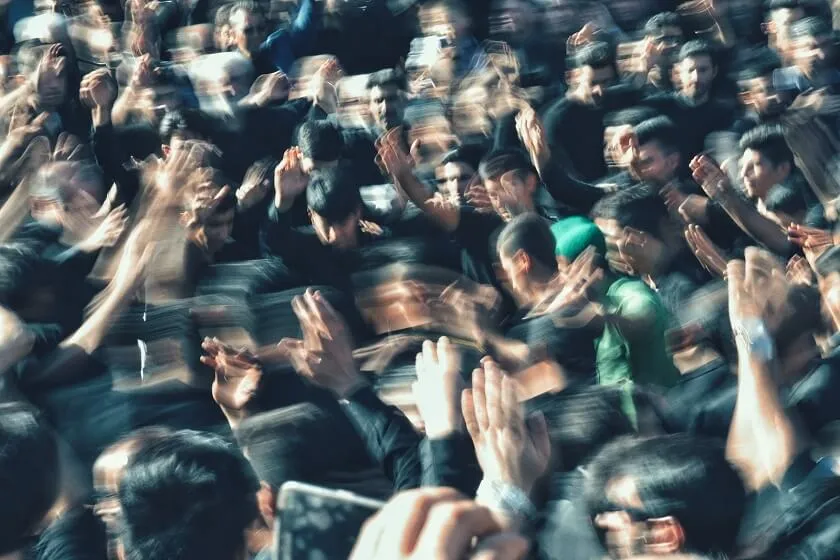
The Tragedy of Karbala; Tasu’a and Ashura
The Tragedy of Karbala, a pivotal event in Islamic history, is a real tale of courage and sacrifice. Understanding its significance offers insight into the rich religious and cultural practices in Iran and other parts of the Muslim world. The story revolves around Imam Husayn, who faced insurmountable odds in his quest for justice and righteousness. You’ll find echoes of this narrative woven into the fabric of Iranian society, particularly during the month of Muharram, when rituals and commemorations honor Imam Husayn’s memory.
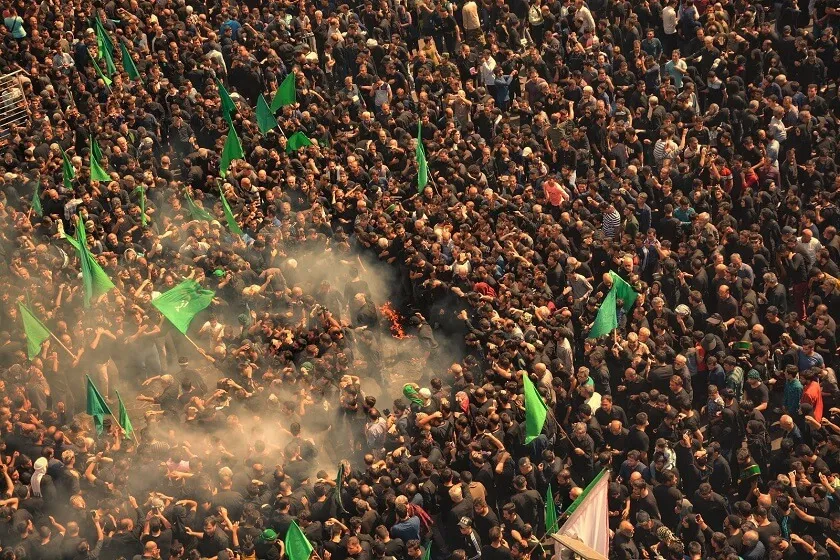
Tasu’a
Tasu’a, the ninth day of Muharram, is a significant occasion for Shia Muslims, connected to the events of Karbala. This day, known as the “Eve of Ashura,” holds deep historical and religious importance as the last night Imam Husayn and his companions spent before the tragic Battle of Karbala. Tasu’a bears particular significance to Abolfazl al-Abbas, Imam Husayn’s half-brother, revered as a symbol of loyalty and sacrifice. It marks the pivotal moment when the Umayyad army, led by figures like Shemr, confronted Imam Husayn, setting the stage for the ultimate confrontation on Ashura.
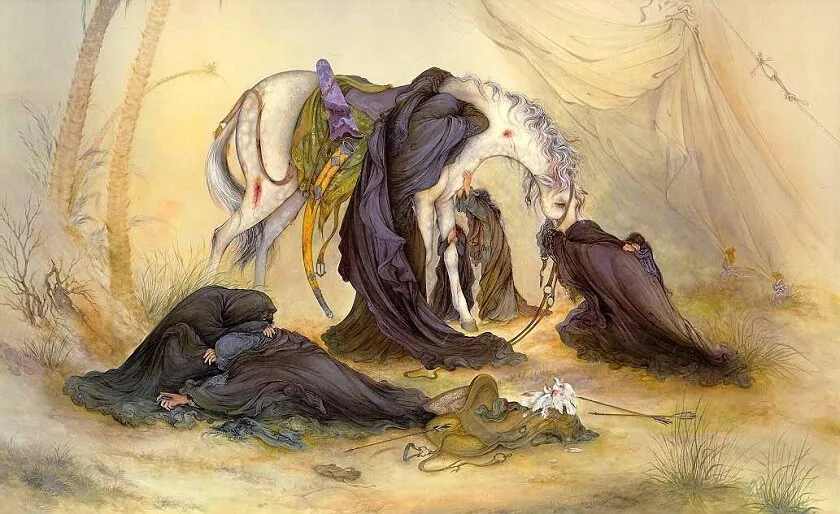
Ashura
Ashura is a significant day of commemoration in Islam, observed annually on the tenth day of Muharram. For Sunni Muslims, Ashura marks various auspicious events in Islamic history, such as the parting of the Red Sea by Moses and the salvation of the Israelites. However, for Shia Muslims, Ashura holds solemn importance as a day of mourning. It commemorates the martyrdom of Husayn ibn Ali, the grandson of Prophet Muhammad and the third Shia imam.
Imam Husayn’s refusal to pledge allegiance to the Umayyad caliph Yazid ibn Mu’awiya led to his tragic death in the Battle of Karbala on Ashura in 61 AH (680 CE). Shia communities worldwide honor Husayn’s sacrifice through mourning gatherings, processions, and reenactments of the battle. Ashura serves as a symbol of resistance against oppression and a testament to the enduring spirit of faith and justice among Shia Muslims.
Muharram Rituals in Iran
As you journey through this enchanting country, you’ll encounter various rituals and ceremonies, each offering a glimpse into the rich Iranian life. Among these, the rituals observed during the month of Muharram stand out as poignant expressions of faith, remembrance, and solidarity. From the busy streets of Tehran to the tranquil squares of Yazd, Iranians gather to commemorate the martyrdom of Imam Husayn in the Battle of Karbala.
Ta’zieh
Inscribed on UNESCO‘s List of the Intangible Cultural Heritage of Humanity in 2010, Tazieh refers to a dramatic portrayal of the events of Ashura, drawing locals and tourists alike. Originating during the Safavid era, Tazieh holds a significant place in Iranian culture, with its solemn performances evoking deep emotions and reflections on the sacrifice of Imam Husayn and his companions. Through elaborate costumes, music, and storytelling, Tazieh brings to life the bravery and tragedy of Karbala, allowing spectators to immerse themselves in the historical narrative and spiritual significance of Muharram.
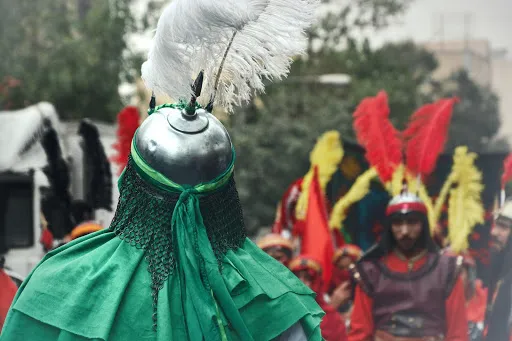
Nazri
Nazri, a generous tradition rooted in Persian culture, offers visitors a taste of hospitality and devotion during Muharram. As you walk through the streets, you’ll encounter stalls offering sweet drinks, fresh tea, and local dishes, all provided free of charge as a pledge to Imam Husayn. This act of giving reflects the belief that sharing food in honor of Imam Husayn carries healing blessings, inviting you to partake in the communal spirit of compassion and generosity. Among the dishes served, Gheymeh, a hearty stew of cooked lamb with split peas and rice, stands out as a symbol of nourishment and solidarity during this solemn month.
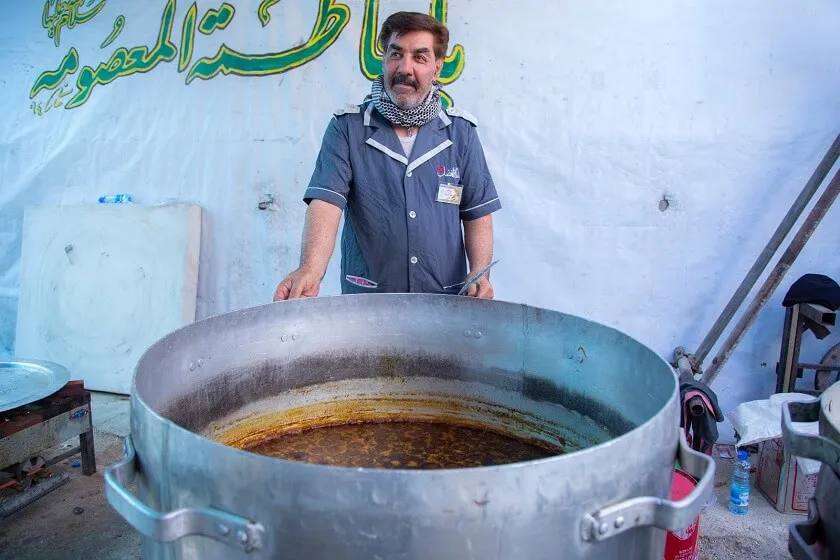
Nakhlgardani
One striking tradition you’ll encounter during Muharram is Nakhlgozari, a solemn ceremony deeply rooted in history and symbolism. Nakhl, meaning “palm tree” in Persian, serves as a symbol of Imam Husayn’s coffin, embodying the tragic events of Karbala. Historians suggest that the ritual derives its name from the tradition of carrying Imam Hussain’s body on palm leaves to his final resting place. This ritual is predominantly observed in regions like central Yazd province.
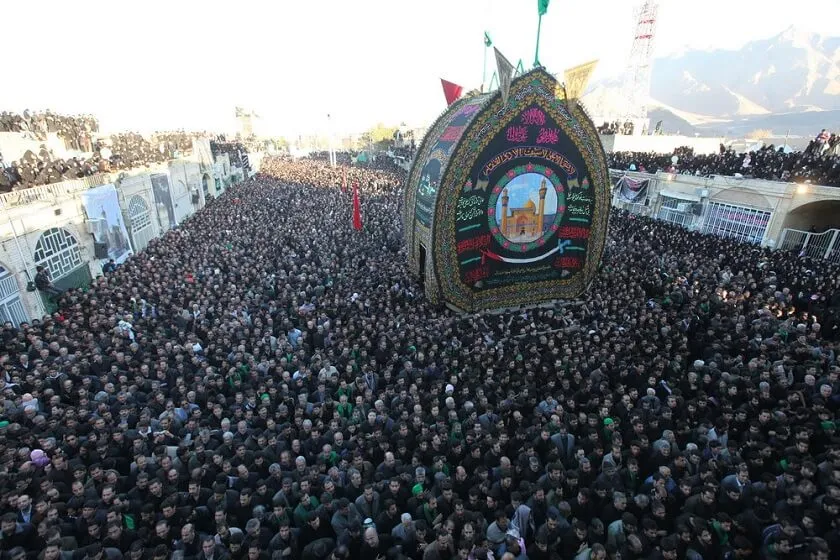
The Nakhl itself is a massive wooden structure resembling a leafy palm tree adorned with intricate decorations, including mirrors, knots, and flowers, often prepared days in advance. During the ceremony, strong men lift and carry the bulky Nakhl in a procession reminiscent of a funeral march while mourners beat their chests and recite heartfelt elegies. Cities across Iran, from Semnan to Naeen, participate in Nakhlgozari, with the rituals in Yazd province particularly notable. With roots tracing back to the Safavid era, Nakhlgozari stands as a testament to the enduring significance of Muharram observances in Iranian Shia culture.
Shah Husayn Gouyan
In the northwestern province of East Azarbaijan and particularly in Tabriz, Shah Husayn Gouyan emerges as a Muharram tradition deeply ingrained in local culture. Meaning “calling King Hussein” in Persian, this ritual, known as “Shakhsi” in Turkish, is a solemn expression of reverence for Imam Husayn. Men, holding long sticks, line up in orderly queues, their hands placed on the backs of those before them, moving in a slow, rhythmic march.
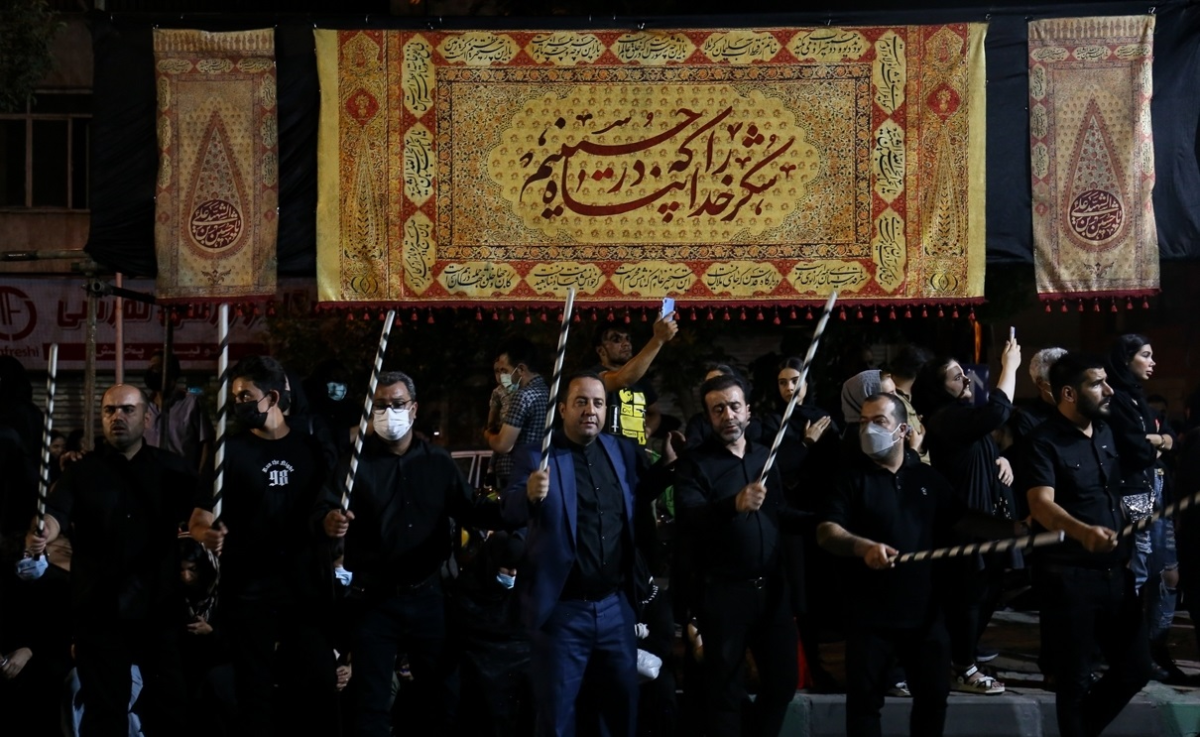
With each step, they bring their sticks from their heads to their feet, chanting the name of Imam Husayn. This procession, reminiscent of a military parade, symbolizes the readiness of mourners to stand alongside Imam Husayn in the battle of Karbala. This unified movement, tracing back to the Safavid era, continues as a cherished ritual observed in the days leading up to Muharram, highlighting the enduring unity and reverence within the community.
Karbzani
In the province of Gilan in northern Iran, you’ll encounter the tradition of Karbzani, a heartfelt tribute to Imam Husayn during Muharram. Mourners gather in an orderly procession, each carrying a pair of cylindrical wooden instruments known as “karb” in the local Gilaki language. Instead of traditional chest-beating, these mourners strike the karbs together, producing a somber melody evocative of sorrow and lamentation.
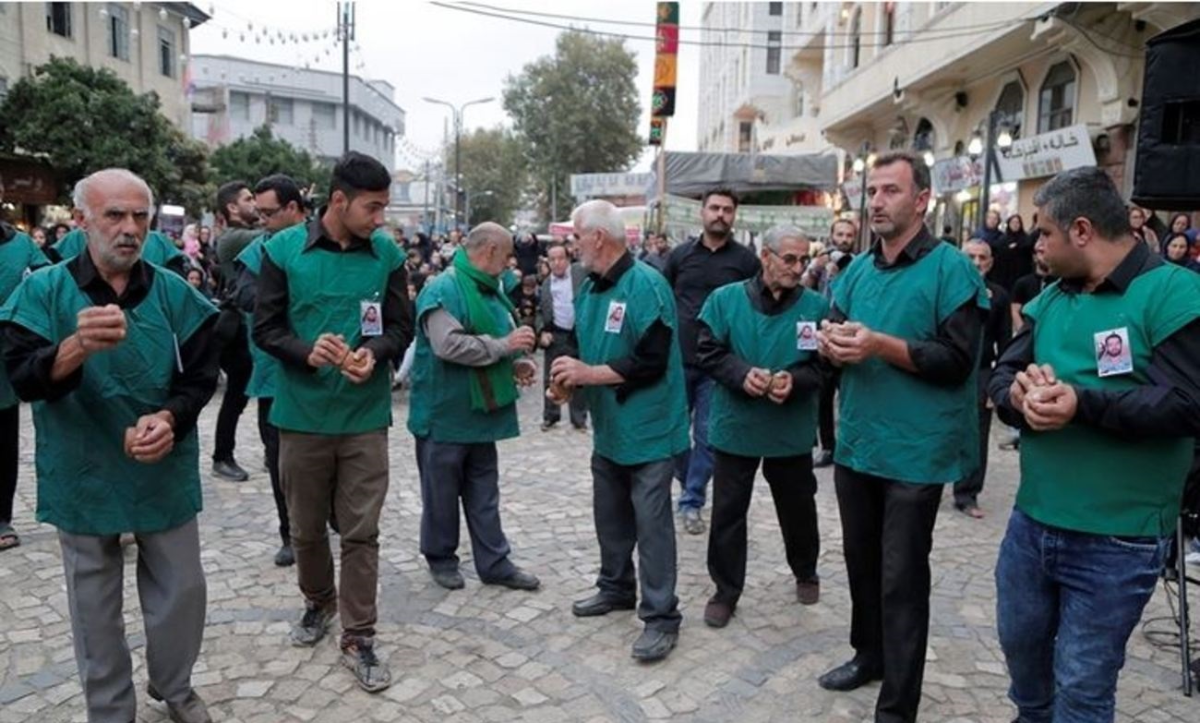
The origins of this ritual are traced back to the early 19th century, when poet Mohammad Ebrahim Ghabraei, inspired by mourning customs witnessed in Karbala, adapted the practice to reflect the cultural rhythms of Gilan, imbuing it with new meaning. Symbolizing repentance and regret, Karbzani is a powerful expression of allegiance to Imam Husayn and is performed throughout the first ten days of Muharram, resonating deeply within the local communities and recognized as an integral part of Iran’s intangible cultural heritage.
Sham-e Ghariban
Sham-e Ghariban, an evocative ritual observed on the evening and night of Ashura, immerses you in a solemn atmosphere of remembrance and mourning. As candles flicker in the darkness, people gather to lament the plight of orphan children whose tents were set ablaze by their enemies, leaving them forsaken and alone. Burning a tent on the 10th day of mourning symbolizes this tragic event while lighting candles in moonlight highlight the community’s solidarity and compassion. Sham-e Ghariban invites you to reflect on the resilience and courage of those who endured hardship and persecution for the sake of truth and righteousness.
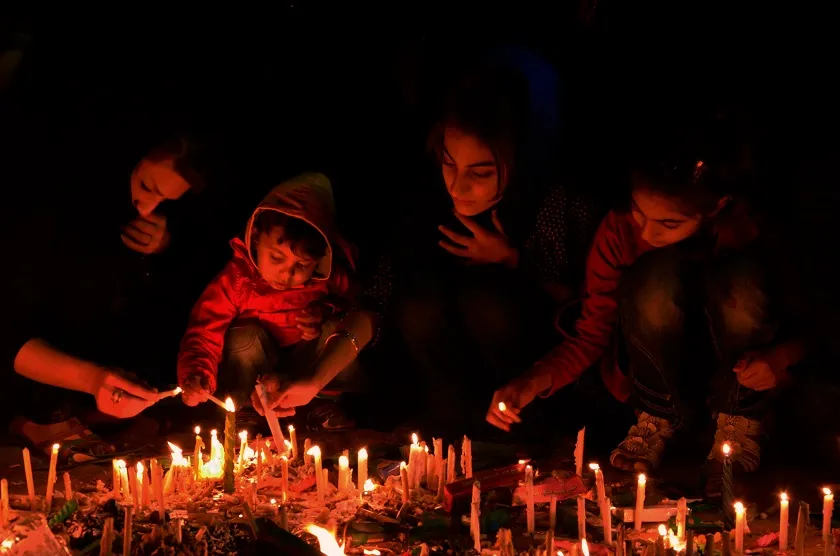
Gel Mali
Gel Mali, a unique ritual practiced in Lorestan province, offers a visceral expression of grief and mourning for Imam Husayn. Participants rub mud and dust on their heads and bodies, symbolizing desperation and sorrow for the loss of a loved one. As sermons and chanting commence, the rhythmic chest-beating intensifies, echoing the collective anguish and lamentation of the community. This three-day ritual, held in main squares like Khorramabad, embodies the deep emotional connection and reverence for Imam Husayn’s sacrifice, inviting you to witness the profound expressions of devotion and solidarity among the faithful.
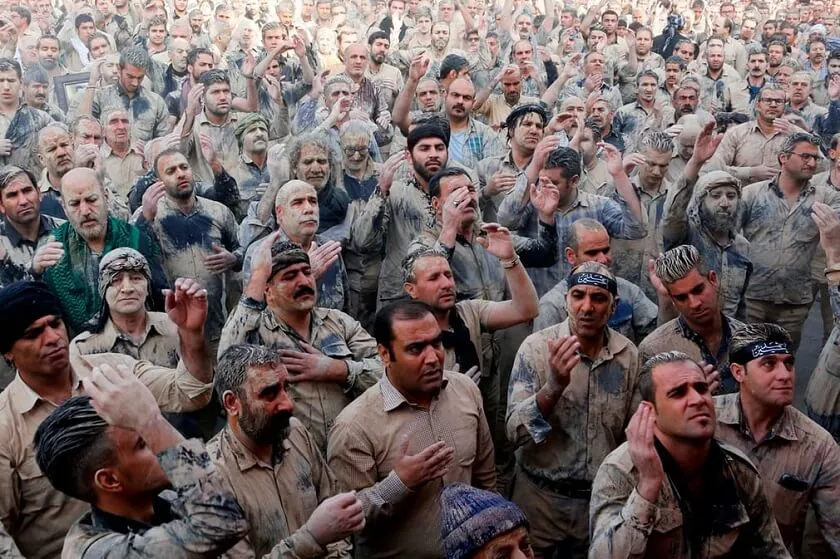
Mash’al Gardani
Mash’al Gardani, a stirring ritual observed in various cities like Tehran and Qom, envelops you in a mesmerizing display of light and sound. Men carry torches mounted on a structure, spinning them overhead in a rhythmic dance of flames while chanting elegies and beating their chests. Against the backdrop of the night sky, the swirling flames illuminate the darkness, symbolizing the enduring flame of Imam Husayn’s legacy and the community’s unwavering commitment to justice and righteousness. Mash’al Gardani invites you to witness the power of ritual and remembrance, where light and sound converge to honor the memory of Imam Husayn and his companions.
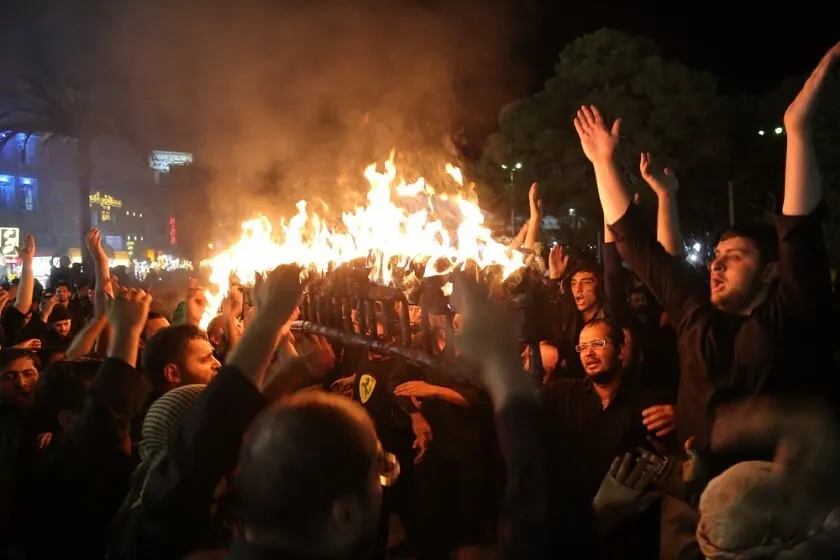
Tashtgozari
Tashtgozari, observed in Ardebil, serves as a poignant reminder of the hardships faced during the Battle of Karbala. This ritual symbolizes the blockade of the Euphrates River to Imam Husayn, highlighting the challenges and sacrifices endured by the Imam and his followers. As mourners carry washtubs into mosques and recite elegies, the symbolism of water becomes a powerful motif, representing both physical deprivation and spiritual endurance in the face of oppression. Tashtgozari reflects the deep reverence and commemoration of Imam Husayn’s struggle for justice and righteousness.
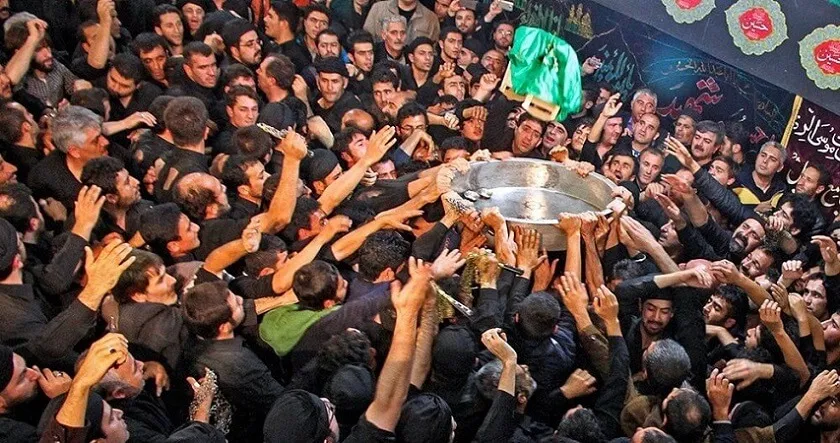
Explore Muharram Rituals with Visit Our Iran
Muharram in Iran is a time of profound religious observance and cultural significance, marked by a series of rituals and ceremonies that honor the martyrdom of Imam Hussain and his companions. Visitors to Iran during Muharram can witness these rituals firsthand and gain a deeper understanding of the country’s religious and cultural heritage.
If you’re considering a visit during this sacred month, why not explore Ziyarat tours offered by Visit Our Iran? Our comprehensive packages cover a variety of services, from visas to flights and accommodations, ensuring a hassle-free and meaningful pilgrimage experience. Contact us today to begin a journey of spiritual discovery and cultural immersion in Iran during Muharram.
